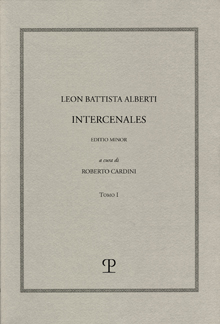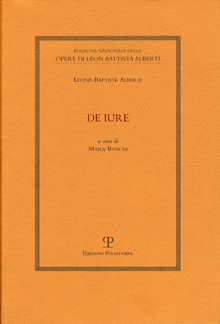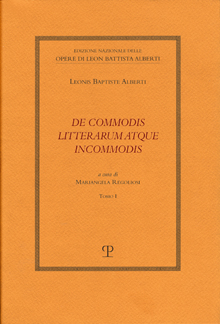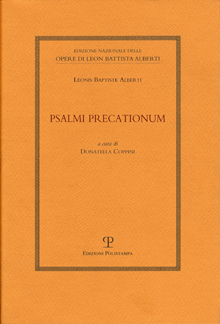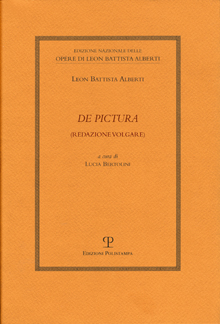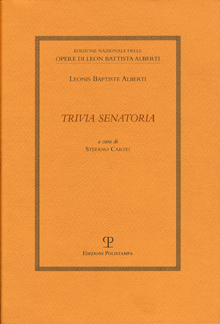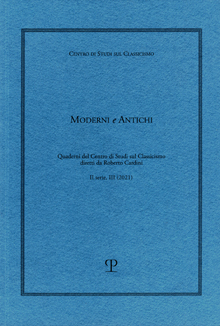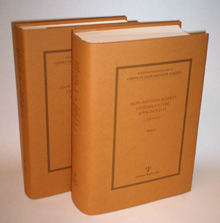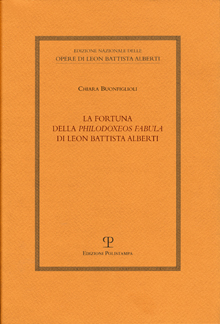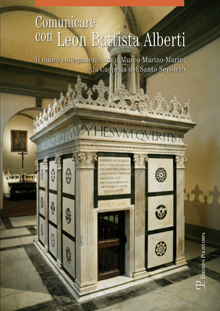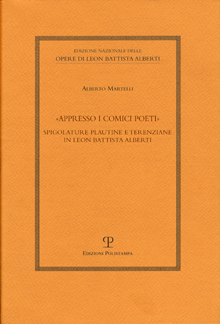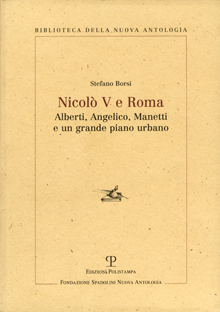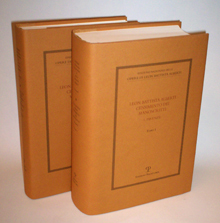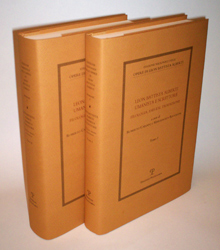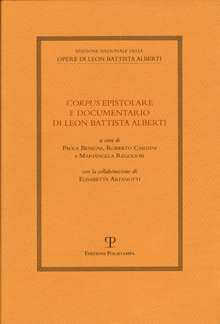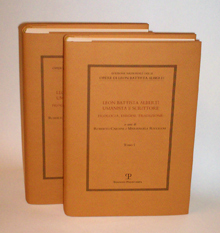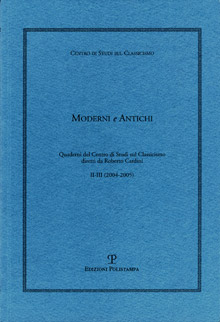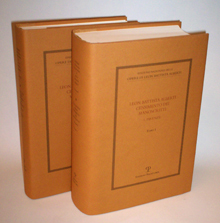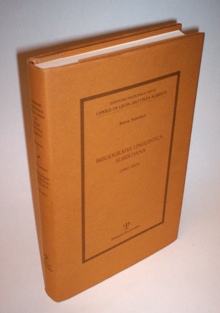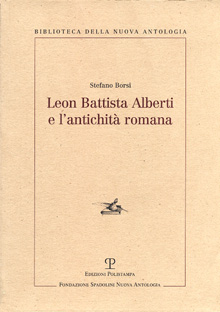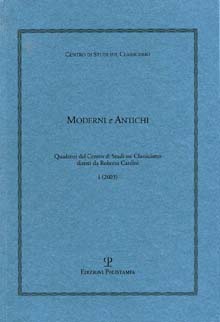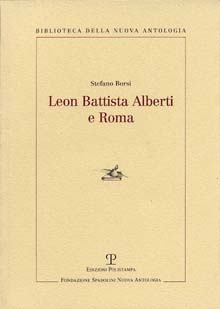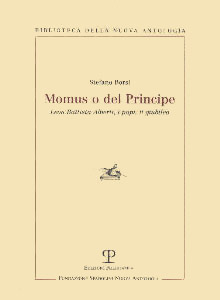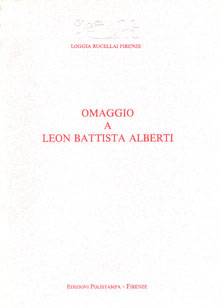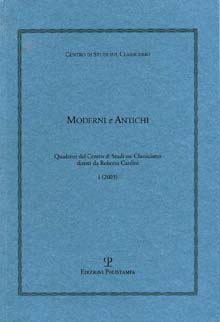Ricerca Veloce
Ricerca Avanzata
Leon Battista Alberti
Leon Battista Alberti è Il primo teorico dell'arte umanista,
Alberti apparteneva a un'importante famiglia fiorentina esiliata da Firenze dal
1387. Quando la famiglia tornò in città nel 1429, Alberti ebbe accesso alla
grande architettura e all'arte della città, che studiò a fondo. Conoscitore del
latino e del greco, Alberti non ricevette mai un'educazione architettonica
formale. Le sue idee architettoniche erano il prodotto dei suoi studi e delle
sue ricerche.
I due principali scritti di architettura di Alberti sono il
De Pictura (1435), in cui dichiara con enfasi l'importanza della pittura come
base per l'architettura, e il De Re Aedificatoria (1450), il suo capolavoro
teorico. Come i Dieci libri sull'architettura di Vitruvio, il De Re
Aedificatoria era suddiviso in dieci libri. A differenza del libro di Vitruvio,
il De Re Aedificatoria spiega agli architetti come devono essere costruiti gli
edifici, non come sono stati costruiti. Il De Re Aedificatoria rimase il
classico trattato di architettura dal Cinquecento al Settecento.
L'incompiuto Tempio Malatestiano di Rimini (1450) fu il
primo edificio che Alberti progettò e tentò di costruire sulla base dei suoi
principi architettonici. Fino a quel momento l'esperienza architettonica di
Alberti era stata puramente teorica. La facciata di Santa Maria Novella
(1458-71) è considerata il suo più grande risultato, poiché permette alle parti
preesistenti e a quelle aggiunte di fondersi in una chiara affermazione dei
suoi nuovi principi.
Alberti morì a Roma nel 1472.
Leon Battista Alberti is the first theorist of Humanist art, Alberti belonged to an important Florentine family that had been exiled from Florence since 1387. When the family returned to the city in 1429 Alberti gained access to the city’s great architecture and art which he studied extensively. Well-versed in Latin and Greek, Alberti never received a formal architectural education. His architectural ideas were the product of his own studies and research.
Alberti’s two main architectural writings are De Pictura (1435), in which he emphatically declares the importance of painting as a base for architecture and De Re Aedificatoria (1450) his theoretical masterpiece. Like Vitruvius’s Ten Books on Architecture, De Re Aedificatoria was subdivided into ten books. Unlike Vitruvius’s book, Alberti’s told architects how buildings should be built, not how they were built. De Re Aedificatoria remained the classic treatise on architecture from the sixteenth century until the eighteenth century.
The unfinished Tempio Malatestiano in Rimini (1450) was the first building that Alberti designed and attempted to build based on his architectural principals. Up to that point Alberti’s architectural experience was purely theoretic. The facade of Santa Maria Novella (1458-71) is considered his greatest achievement since it allows the pre-existing and newly added parts of the building to merge into a clear statement of his new principles.
Alberti died in Rome in 1472.
Libri scritti da Leon Battista Alberti
Intercenales
- € 36,10
- € 38,00
De iure
- € 30,40
- € 32,00
De commodis litterarum atque incommodis
- € 61,75
- € 65,00
Psalmi precationum
- € 28,50
- € 30,00
De pictura
- € 38,25
- € 45,00
Trivia senatoria
- € 29,75
- € 35,00
Pontifex
- € 29,75
- € 35,00
Vedi anche...
Moderni e Antichi, II serie, anno III (2021)
- € 19,00
- € 20,00
La tradizione a stampa delle opere di Leon Battista Alberti
- € 71,25
- € 75,00
La fortuna della ‘Philodoxeos fabula’ di Leon Battista Alberti
- € 29,75
- € 35,00
Comunicare con Leon Battista Alberti
- € 11,90
- € 14,00
«Appresso i comici poeti»
- € 28,90
- € 34,00
Nicolò V e Roma
- € 27,20
- € 32,00
Alberti e la tradizione
- € 63,75
- € 75,00
Leon Battista Alberti umanista e scrittore
- € 55,25
- € 65,00
Corpus epistolare e documentario di Leon Battista Alberti
- € 51,00
- € 60,00
Alberti e la cultura del Quattrocento
- € 63,75
- € 75,00
Moderni e Antichi, anni II-III (2004-2005)
- € 28,50
- € 30,00
Leon Battista Alberti e Napoli
- € 16,15
- € 19,00
Leon Battista Alberti. Censimento dei manoscritti
- € 102,00
- € 120,00
Bibliografia linguistica albertiana
- € 29,75
- € 35,00
Leon Battista Alberti e l’antichità romana
- € 12,75
- € 15,00
Moderni e Antichi, anno I (2003)
- € 24,70
- € 26,00
Leon Battista Alberti e Roma
- € 16,15
- € 19,00
Momus o del Principe
- € 10,53
- € 12,39
Omaggio a Leon Battista Alberti
- € 10,33
Moderni e Antichi
- € 0,00
